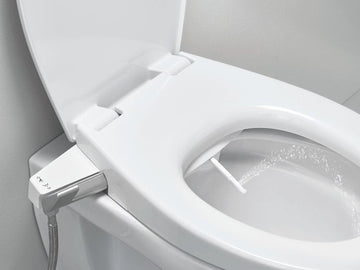In recent years, the concept of bidets has steadily gained popularity in various parts of the world, especially in regions committed to sustainability and efficient sanitation practices. As an Industry QA professional, understanding the different types of bidets and their applications is crucial for evaluating their effectiveness in diverse settings. This guide aims to delve deep into the world of bidets, offering insights that will help you make informed decisions.

Understanding the Basics: What is a Bidet?
A bidet is a plumbing fixture designed to promote personal hygiene by using water for cleansing. Originating from France in the 1700s, bidets have evolved significantly, now offering a range of features tailored to modern needs. From traditional standalone fixtures to advanced electronic models, the variety of bidets available today caters to various preferences and budgets.
Exploring Different Types of Bidets
Standalone Bidets
Standalone bidets are the classic form, typically found in European countries. These fixtures resemble a toilet but are designed solely for washing purposes. They require separate plumbing and often include features like adjustable water pressure and temperature. Standalone bidets are ideal for bathrooms with ample space and are known for their efficiency in thorough cleaning.
Bidet Attachments
For those looking to enhance their existing toilet setups, bidet attachments offer a simple solution. These devices are mounted under the existing toilet seat and connect to the water supply. They usually feature a nozzle that sprays water for cleaning. Bidet attachments are cost-effective and easy to install, making them a popular choice for homeowners seeking a quick upgrade. For more details on the differences between bidet seats and attachments, you can check out this insightful comparison on bidet seat vs bidet attachment.
Handheld Bidets
Commonly referred to as shower bidets or bidet sprayers, handheld bidets are versatile and easy to use. They consist of a spray nozzle attached to a hose, allowing users to control the direction and intensity of the water stream manually. Handheld bidets are popular in Asia and the Middle East and are often used for cleaning not just the user but also the toilet itself. Their flexibility makes them a practical choice for diverse sanitation needs.
Electric Bidets
Electric bidets are the pinnacle of luxury in personal hygiene. Equipped with features like heated seats, adjustable water temperature, air dryers, and even remote controls, these bidets provide a spa-like experience. While they are more expensive than other types, their advanced functionality makes them a worthwhile investment for those who prioritize comfort and convenience. For a detailed comparison of electric and non-electric options, visit this article on electric vs non-electric bidets.
The Environmental and Economic Impact of Bidets
With growing awareness about environmental conservation, bidets have emerged as a sustainable alternative to traditional toilet paper. By reducing paper consumption, bidets contribute to less deforestation and lower carbon footprints. Additionally, the use of bidets can lead to significant cost savings over time, as households spend less on toilet paper. To understand the economic benefits further, you might want to explore how to calculate the ROI for water-saving toilets in this informative guide.

FAQs: Addressing Common Questions about Bidets
Are bidets sanitary?
Yes, bidets are highly sanitary. They use water, which is a more effective cleaning agent than paper. Bidets also reduce the risk of irritation and infections associated with frequent toilet paper use.
Can bidets be installed in any bathroom?
Most bidets, especially attachments and handheld versions, can be fitted into existing bathrooms with minimal modifications. However, standalone bidets require additional plumbing and space.
Are bidets cost-effective?
While the upfront cost of bidets, particularly electric models, may be higher, they often lead to savings in the long run by reducing the need for toilet paper.
For more insights on promoting water-saving habits, consider reading this article on how to promote water-saving habits.
In conclusion, as an Industry QA professional, understanding the various types of bidets and their benefits can significantly aid in making informed decisions about sanitation options. Whether it's the simplicity of a bidet attachment or the luxury of an electric bidet, these fixtures offer a sustainable and efficient solution for personal hygiene.
For a detailed exploration of how to use bidets effectively, you may find this guide on how to use bidets quite useful.
This article contains affiliate links. We may earn a commission at no extra cost to you.






